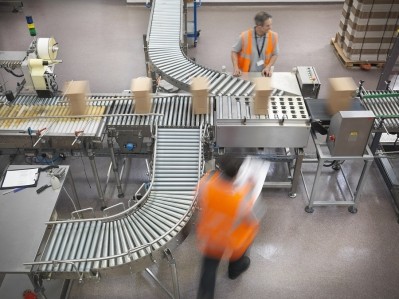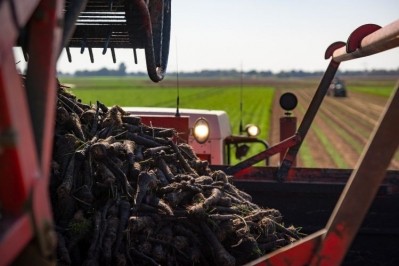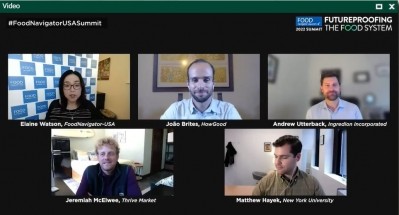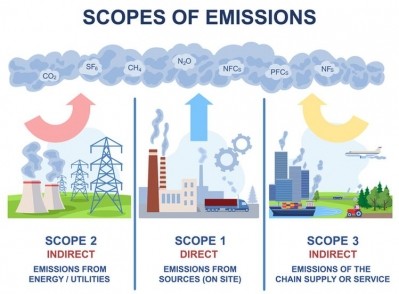HowGood: ‘We’ve created the world’s largest food sustainability database’
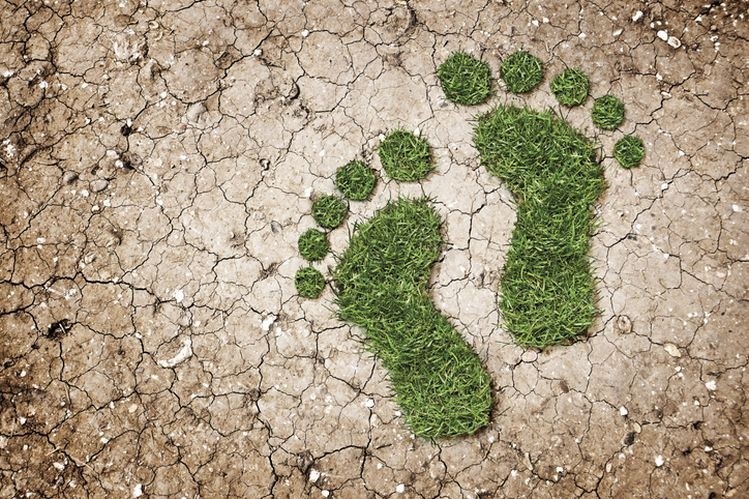
“You can't manage what you don't measure, and you'd be amazed at how many companies still have no clue about the social or environmental impact of their products,” says João Brites, director of growth and innovation at HowGood – billed as ‘the world's largest food sustainability database.’
“A full lifecycle assessment can cost easily $100,000 and take six months to complete, and a lot of food companies are struggling with that, especially if they make a lot of products,” said Brites. “And that’s where our database comes in, because it's about making insights about environmental impact more accessible to food companies.”
‘You can't manage what you don't measure’
So how does HowGood work, and how accurate are assessments it makes about individual food products in its database?
According to Brites: “We have spent the last 15 years mapping global supply systems and creating a massive database that draws from over 550 different data sources to assess over 33,000 different ingredients and materials across over 200 sustainability metrics for over two million consumer goods.
“Partners that work with us including Ahold Delhaize, Chipotle, Danone and Ingredion, use this data to do three things. The first is to measure their sustainability impact. The second is to understand how to improve it. And the third is understanding how to communicate this impact with integrity and in alignment with local regulatory standards.”
GHG emissions, water footprint, land use, labor risk, biodiversity, soil health, animal welfare
He added: “For every ingredient [in a given finished product a client wants to assess], we map the top sourcing locations for that ingredient based on our global import and export database. So if you’re manufacturing in the United States and buying soy, we know the top 10 to 15 countries you're likely sourcing that soy from, or if you're sourcing it domestically, the top 10 to 15 states in the US that supply it. Soy from Brazil, for example, comes with a risk of deforestation, so we then pull data from the relevant local database, which in the US, for instance, might be the USDA LCA Commons database.
“The companies we work with tell us where they’re sourcing their ingredients from and for each ingredient we look at GHG emissions, water footprint, land use, labor risk, biodiversity, soil health, animal welfare and consult our databases. And then at the end we factor in the percentage inclusions of each ingredient in the formulation and come up with an overall product score as well as metrics on each area such as water use, land use and so on.”
One of the most appealing aspects of the software – which Brites says is used by product developers, sustainability teams and brand managers – is the ability to rapidly assess the potential impact of changing an ingredient in a formulation against key environmental and social impact metrics as firms develop new products or reformulate existing ones, he claimed.
“As something like 80% of a product sustainability impact happens at the agricultural stage, you can use the platform to try out different formulations and compare the sustainability impact and then try and design a more sustainable product.”
"Partners that work with us including Danone, Ingredion and Chipotle, use this data to do three things. The first is to measure their sustainability impact. The second is to understand how to improve it. And the third is understanding how to communicate this impact with integrity and in alignment with local regulatory standards.”
João Brites, director of growth and innovation, HowGood
‘We update our database every quarter’
But how much lifecycle assessment data is out there about food ingredients, and how accurate/reliable is it?
“There is a lot of data about certain ingredients such as soy, whereas other types of ingredients can be more difficult,” Brites acknowledged. “We update our database every quarter, so if any of those 550 underlying data sources changes, we incorporate those changes into our platform on a quarterly basis.”
The platform uses two types of data sources, he explained: “The first one is structured data sources, typically lifecycle assessment inventory databases based on ISO standards, the standards from the Greenhouse Gas Protocol, the Product [Life Cycle Accounting and Reporting] Standard and these are often peer reviewed international research.
“Then we have unstructured data sources, things that are not in an LCA database, but in a scientific journal such as the International Journal Of Lifecycle Assessment, the Journal of Cleaner Production, the Journal Of Industrial Ecology, along with primary data collected by companies who have conducted lifecycle analyses on their products according to internationally recognized standards.”
Sustainability claims: Pros and cons to generalized and specific claims
So as Brites wanders around trade shows and supermarkets, what is he seeing on packaging?
He added: “I was at the Natural Products Expo West show in March and I saw a lot of unqualified sustainability claims, references to regenerative farming and eco-friendly products, and I think that is going to generate a lot of legal risk for companies.”
That said, if companies avoid generic ‘climate-friendly’ claims and home in on specifics about certain ingredients or packaging materials that are underpinned by certifications, for example, this may confer a ‘green’ halo over products that are fundamentally bad for the environment, he acknowledged.
For example, given that the majority of emissions in food and beverage products will come earlier in the cycle from agricultural emissions, Brites says he is suspicious of companies making claims about their green credentials based solely on packaging, because “packaging typically only accounts for around 5% of the footprint when you do a full lifecycle analysis.”
Similarly, if you only focus on one aspect of sustainability, you can miss the bigger picture, he said: “We can’t just talk about carbon footprint, or just water use, because you can make a change that might reduce your carbon footprint, but might have negative effects on biodiversity, so you need to consider a broad spectrum of inputs, which is why we look at social and environmental impacts and the full lifecycle of the product.”
Sustainability rating system at the shelf
He added: “From a consumer facing perspective, you cannot tell shoppers on one package, this is my water footprint, this is my carbon footprint, this is my biodiversity footprint, this is my land use footprint and so on, so we have developed a rating system that’s used by Stop & Shop and Giant stores, rating a product as good, great, or best.
“It’s a positive sustainability rating system that compares 2 million products in our data set which we have analyzed from retailers we work with such as Walmart and Ahold Delhaize, so we have ingredient lists and certification information for those products. We also work with food manufacturers such as Danone, foodservice companies such as Chipotle, and ingredients companies such as Ingredion.”
*Read the SEC proposed rule change HERE.
* Read about the Uyghur Forced Labor Prevention Act HERE.
* Read about the Green Guides HERE and the regulatory schedule to update them HERE.


